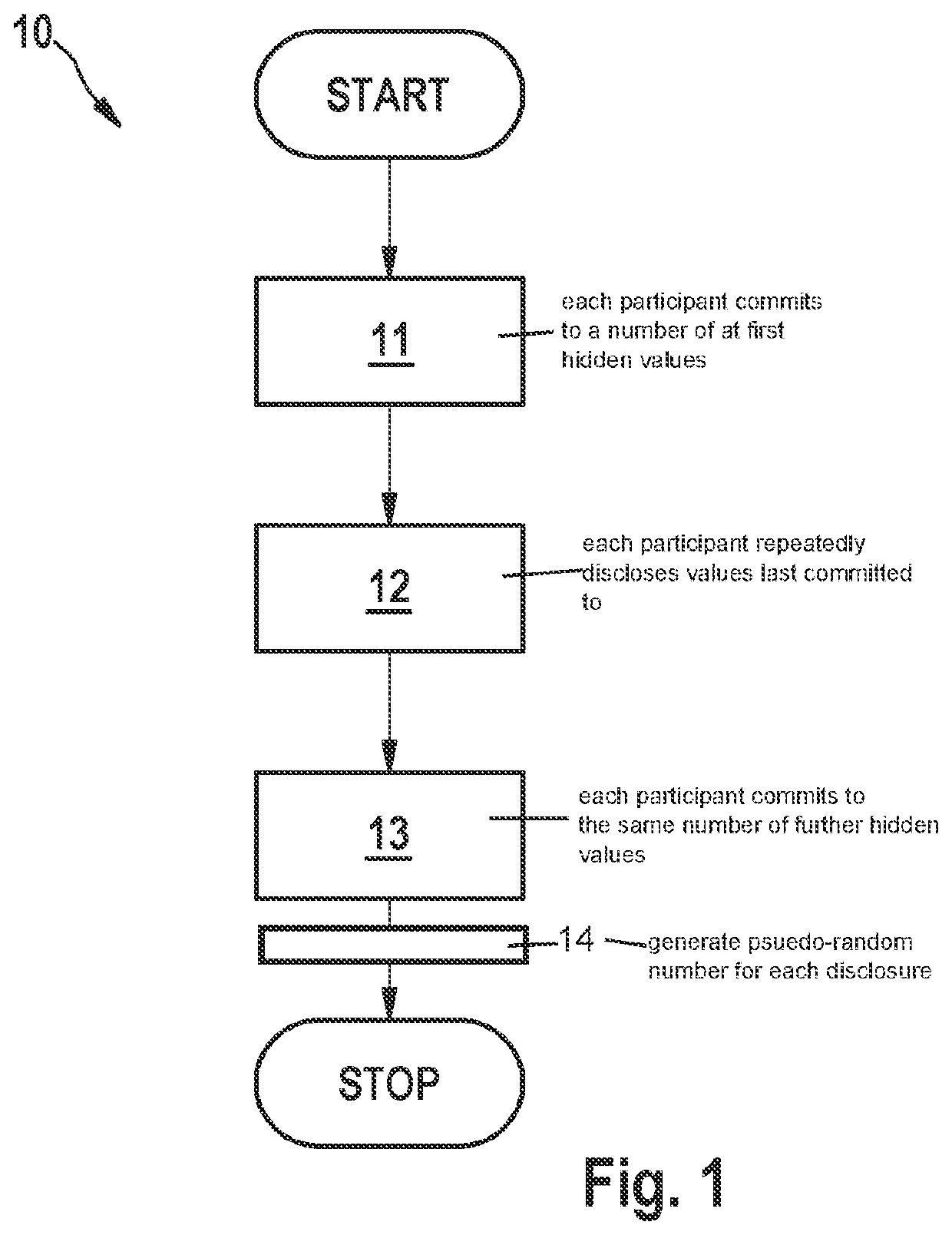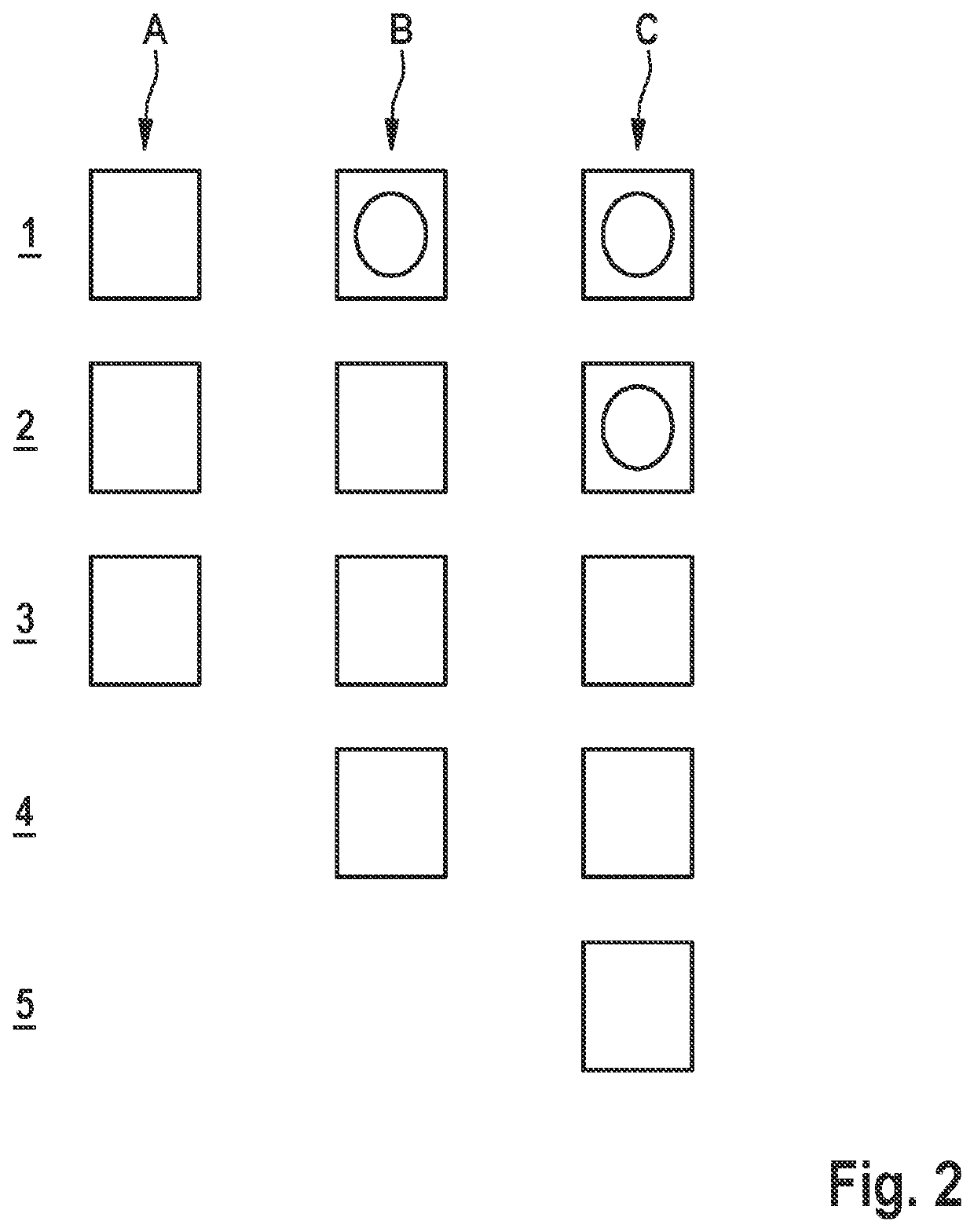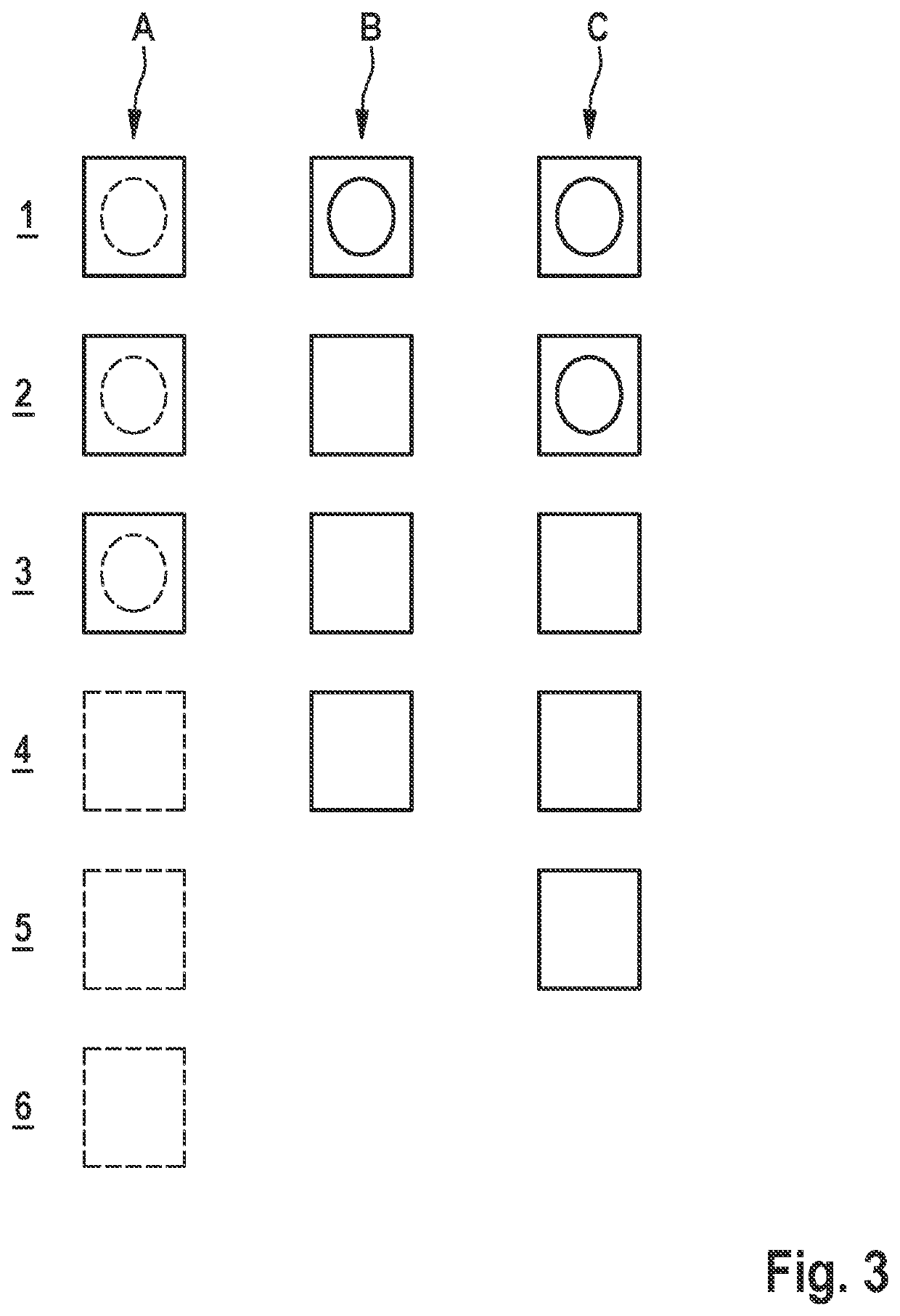Method and device for generating a pseudo-random number sequence
a pseudo-random number and sequence technology, applied in the field of pseudo-random number sequence generation, can solve the problems of increasing the number of participants, unable to properly continue dapp, and unsuitable approaches to the generation of random numbers that are not completely secure from the outs
- Summary
- Abstract
- Description
- Claims
- Application Information
AI Technical Summary
Benefits of technology
Problems solved by technology
Method used
Image
Examples
Embodiment Construction
[0023]FIG. 1 illustrates the basic sequence of a method (10) according to the present invention. In the data structure managed on the state channel, each of the participants commits to at least a number of at first hidden values (process 11) that corresponds to the number of participants. Each of the participants in the data structure then respectively repeatedly discloses the values last committed to by that participant, in the stated number (process 12), and commits to the same number of further—at first also hidden—values (process 13), so that with each disclosure (12) a pseudo-random number can be generated (process 14).
[0024]This process is now explained on the basis of the data memory, shown in FIGS. 2 through 5 in successive states in table form, of an exemplary dApp having three participants. For each of the three participants A, B, and C, the values committed to and disclosed by this participant are entered in a column of the respective table, a rectangle representing a val...
PUM
 Login to View More
Login to View More Abstract
Description
Claims
Application Information
 Login to View More
Login to View More - R&D
- Intellectual Property
- Life Sciences
- Materials
- Tech Scout
- Unparalleled Data Quality
- Higher Quality Content
- 60% Fewer Hallucinations
Browse by: Latest US Patents, China's latest patents, Technical Efficacy Thesaurus, Application Domain, Technology Topic, Popular Technical Reports.
© 2025 PatSnap. All rights reserved.Legal|Privacy policy|Modern Slavery Act Transparency Statement|Sitemap|About US| Contact US: help@patsnap.com



